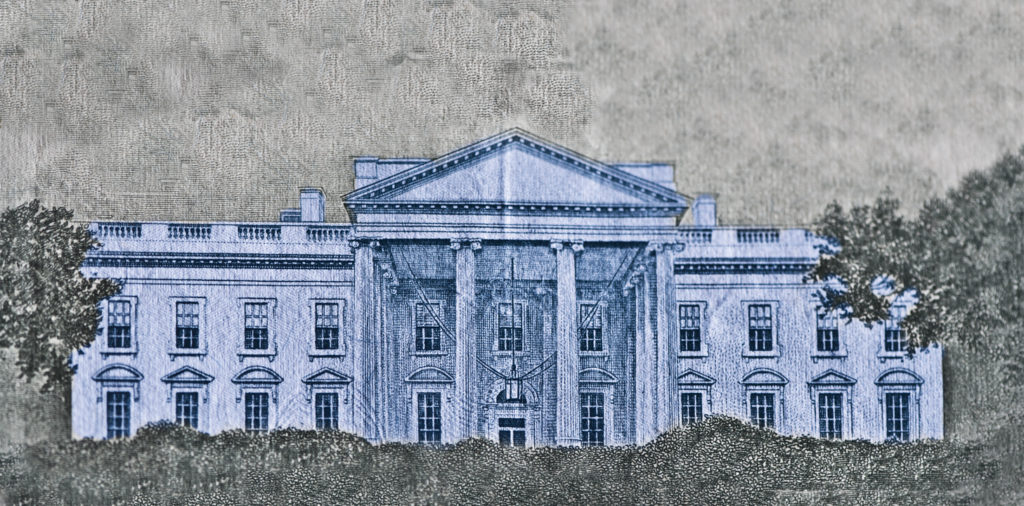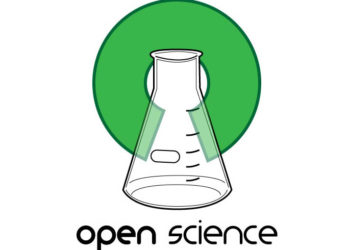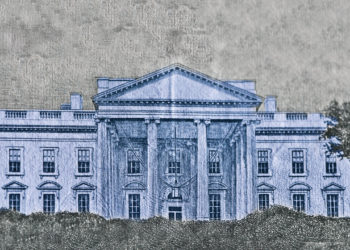In 2009, a US congressional committee with responsibility for science and technology policy invited a small group of representatives from research libraries, academia, publishing, and the information science research community to work together on a set of recommendations to help shape policy regarding the public’s access to peer-reviewed articles resulting from federally funded research. The formation of the Scholarly Publishing Roundtable (SRT) led to a proposal that ended up significantly shaping the federal policy subsequently issued by the White House Office of Science and Technology Policy — an unusual (probably unprecedented) example of cooperation and compromise across the sectors of the scholarly communication ecosystem leading directly to the implementation of government policy that greatly expanded public access to scholarly publications. To mark the tenth anniversary of the release of those guidelines, four principals of the SRT (T. Scott Plutchak, Fred Dylla, Crispin Taylor, and John Vaughn) have published an article in Learned Publishing looking back on the experience and suggesting some lessons that we might derive from it today. I conducted an email interview with the authors, part two of which is below. (Part one was published yesterday, May 17.)

Some readers may find interesting your repeated opinion that the dinners that took place the evening prior to each meeting were nearly as important as the meetings themselves. Why do you think that was the case?
(Vaughn) The dinners were certainly important; I think we all agree they contributed significantly to a familiarity and tone that facilitated reaching a near-consensus. But it would be an overstatement to claim they were as important as the meetings themselves. The dinners helped establish trust and a degree of camaraderie, but the substantive hard work occurred during the meetings.
(Dylla) Early in our planning, John and I thought that an informal setting would be most conducive to establishing rapport among the group. We chose a quiet private room in a well-known DC restaurant/hotel (the Tabard Inn) that has a history of hosting behind the scenes gatherings as lawmakers, lobbyists and influencers as they made the sausage of public policy. In hindsight, this decision turned out to be one of our most important for the success of the venture.
I recall my own impression of meeting many in the group who I knew only by reputation – and one that was colored by my own experience and reading of their activities and views on the often contentious issue of open access. As we were sampling a very important component of the evening (the first bottles of wine circulating around the table) and as we perused the dinner menu, we asked everyone to introduce themselves with a brief biography. We did not want to accomplish any committee work that first evening. Our only goal was to get to know each other in a pleasant, unhurried setting that was obviously made more conducive by sharing good food and wine. This tactic worked. By the end of the evening, I thought “well, these are all reasonable and intelligent people – I can learn from and work with them.”
Because of how well the opening informal dinner set the stage for the committee’s deliberations, we decided to schedule a dinner the night before each of the in-person meetings. We encouraged all committee members to try to attend both the meetings and dinners in person, although this was not possible for everyone every time. The subsequent dinners allowed committee members to discuss the issue informally outside of the more structured agenda of the official meeting occurring the next day.
As we look back on the dynamic of the Roundtable’s deliberations more than a decade ago, we are still struck by the impact of breaking bread together before tough negotiations. Before the US Congress went on its current 3-day working schedule, members were in town all week and could get together informally for dinners or participate as honorary board members of the innumerable Washington charity events. These gatherings are rare with the Congress’s current compressed schedules. We wonder how much better our legislators could govern if they had conversations over a quiet dinner table rather than during televised Congressional hearings?
(Putchak) By 2009, after more than a decade of name calling and demonizing, there was very little trust left between librarians and publishers. In order for discussions toward consensus to be productive there has to be a willingness to see people who view the issues differently from you as people of good will, acting in good faith. The dinners served to poke holes in the caricatures that we create. If you can joke and laugh with one another, find that there are areas of shared interests and values, then it becomes easier to work through the difficult disagreements. It’s still not easy, but without that level of rapport, it’s impossible. People in publishing seem to have a better grasp of that truth than many librarians do.
(Taylor) For the same reason that any group of people that actually takes the time to get to know each other is going to have an easier time working effectively: when we see each other as human beings first, we can set aside our preconceived notions of what we each may be thinking. In short, it builds trust.
In the end, two members of the group felt unable to sign off on the final report, and each submitted a dissenting statement that was included as an addendum. Do you think this fact represents a weakness in the final product, or is it evidence of its strength?
(Dylla) It’s in the nature of the consensus we noted above. As we mentioned in the official SPR report and during numerous talks that a number of us gave at various scholarly publishing, library, or society conferences after release of the report, all but two members of the SPR agreed to the full list of SPR recommendations. The dissenting members noted that they could agree with almost all of the recommendations except for proscribing the role for the federal research agencies. The representative from PLOS desired an across-the-board regulation by the federal government that would mandate open access for all publications reporting on federally funded research with a 6-month or less embargo period. The representative from Elsevier felt the committee was delegating too much regulation of the industry by federal agencies by the SPR’s proposed guidance on implementing wider public access.
(Plutchak) I definitely see it as a strength. Chi (Elsevier) and Patterson (PLoS) were both explicit in their support for the overall recommendations. Their disagreements were over the role of government. The OA partisans believed that the big publishers were opposed to open access. This was never the case. It has always been an issue of control. Sadly, that fundamental point has never been seriously debated within our communities.
(Taylor) Stronger. The dissents – from individuals representing opposing extremes on the continuum of perspectives on OA – further reinforced the notion that the Report was the voice of a strong center. (Side note: I have wondered if part of this was that each of them continued to speak for their organizations, rather than for themselves. Maybe the latter was not plausible for either of them. But it might have made a difference.)
(Vaughn) The inability of two members to sign off on the final document represents neither a strength or weakness of the report, but reflects the breadth and depth of competing views on scholarly communication policy, particularly the role of the federal government in defining and enforcing that policy. Both members supported the majority of the report’s recommendations, but one member believed that the report called for too much federal involvement in scholarly publishing, while the other believed the report didn’t call for enough.
We would have been delighted to have the support of all roundtable members for the final report; our failure to do so is an indication of the strength of competing views, which no doubt continue to exist to some extent today. The full endorsement of the recommendations by 12 of the 14 roundtable members clearly met the charge of the HST Committee to develop consensus recommendations for expanding public access to the journal articles arising from federally funded research, and thereby provided effective guidance to federal research funding agencies as they crafted OSTP-mandated public access policies.
In retrospect, what seems to be the clearest success of this endeavor? And are there things you now wish you had done differently?
(Dylla) We think that the clearest measure of success of the Roundtable is the fact that the recommendations presented in the report were largely implemented by the federal government. The recommendations were formally presented to the two sponsors, the HST Committee and the OSTP in January of 2010 – about 6 months after the Roundtable held its first meeting. The recommendations were largely incorporated into federal law within the next year as a component of the America COMPETES Reauthorization Bill of 2010 signed into law by President Obama in January of 2011. Two years later in February of 2013, OSTP released guidance to US federal research agencies based on this legislation. A decade later, almost all federal agencies, regardless of their research budgets, are following this scheme for public access to publications. This is now a fairly mature process that has neither hindered the growth of fully OA journals nor jeopardized the economic viability of small publishers or niche-journals. This wide-spread implementation by the US federal agencies is the reason why these agencies showed no interest in partnering with the Plan S Coalition for open access coming from Europe.
This success with the Roundtable report and recommendations has to be tempered with the remaining problems that the SPR process did not solve. Clearly, solving the access to data is a larger and ongoing process involving the same parties and the need to systematize data structures, establish persistent digital identifiers for data sets, and build accessible and sustainable data archives. Perhaps it is well-past time for a Data Roundtable.
Also, the university representatives of the SPR would agree that we did not solve the financial problem caused by assigning the predominant costs of scholarly publications to the university libraries – whose budgets have generally not grown in proportion to university research budgets.
(Taylor) The clearest success, for me, was to see our work reflected in the Holdren memo. I don’t know that I would have done anything differently (except maybe to attend more of the dinners…); and it was not my role to make organizational or operational decisions. However, I will say that I have wondered from time to time whether it might have been wise to implement either a subsequent reconvening of the SPR or some other continuity mechanisms.
Finally, why did you decide to write the article now?
(Dylla) We felt it was important to put the history of this venture into the citable literature rather than leave it buried in inaccessible emails and less accessible reports. The four of us were invited to mark the fifth anniversary of the report at the 2015 AAAS meeting, so the tenth anniversary seemed a good moment in time to go into that history in detail – although we ended up missing the anniversary by two years! It was also important to acknowledge the contributions of all of the Roundtable members. It was through the concerted efforts of all of us that the Report ended up having the impact that it did.
(Plutchak) Fred asked me in late 2019 to do an initial draft that the four of us could fine-tune. I anticipated knocking something out in a couple of weeks and expected we’d have the whole thing wrapped up in early 2020. But between pandemic and other commitments I wasn’t able to really dig into it until early 2021. As I tried to refresh my memory I found that the real details were documented only in emails, drafts passed among the Roundtable members, and assorted websites, some of which had disappeared in the intervening years. If it weren’t for the Wayback Machine and the fact that several of us are digital packrats, the story could never have been told in this detail. And it’s an important story, demonstrating that compromise and consensus among people of good will is a far more powerful force for change than a strategy rooted in demonizing those one disagrees with. Particularly at this moment in our country’s history it’s a story we need to remember.
Discussion
2 Thoughts on "10 Years of Public Access to the Results of Federally Funded Research: An Interview with the Scholarly Publishing Roundtable (Part 2)"
If you want, I can give you background story on this: https://blog.coturnix.org/2007/08/26/this_prism_does_not_turn_white/
Thanks for the interviews and the posts. It certainly raises questions for follow up. This was a fascinating discussion of how the Holdren policy came about, but how has it worked out?
1. Do the various paths work? I recall the 22 or so agencies took a variety of approach for ensuring post-embargo free access to publicly funded science. NIH and CDC funded work goes to PubMed, DOE or maybe it was DOD stood up its own repository, NOAA, USGS, NASA, EPA and other (most?) agencies partner with CHORUS. A few years ago I went on a tear to see if papers with authors from CHORUS participating agencies or funding were really freely available, They often weren’t but it wasn’t obvious if it was noncompliance or delayed implementation phases in the various plans, or if they had mixed funding, or when the embargo clock even starts. When published online or when assigned to a issue, which can be many months later.
2. Has anyone heard of enforcement? Funders checking on CHORUS performance or withholding funds from scientists who can’t be bothered ?
3. Did it ever get cleared up how much public funding constitutes publicly funded work? My direct funding sources are sometimes nonfederal but the facility received public funds for construction and still do for operation. Often studies are funded with mixed funding. To me it’s a garble.
4. And managing, hosting, and making
public access to data is WAY thornier than hanging PDFs.

